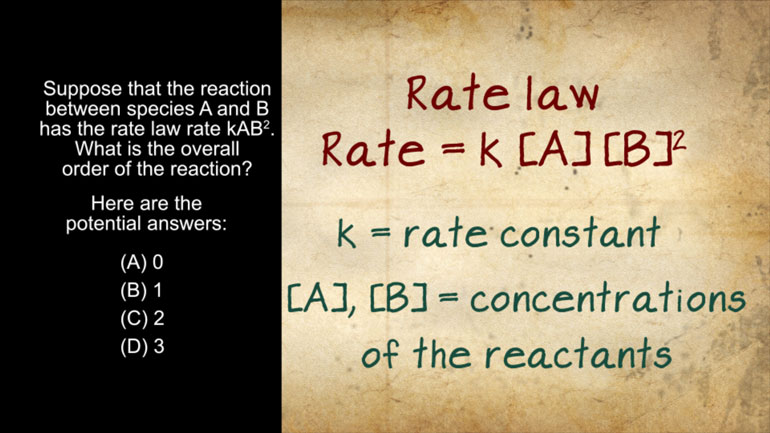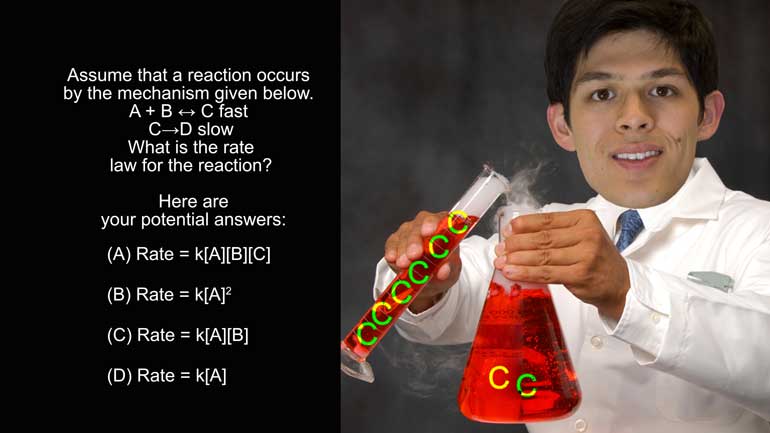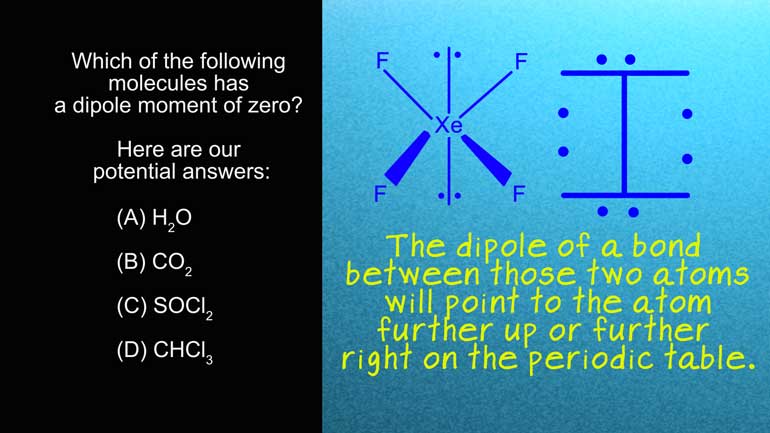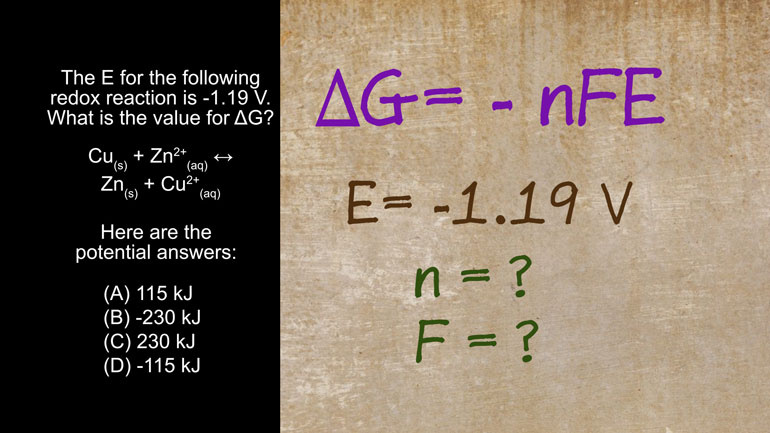ShmoopTube
Where Monty Python meets your 10th grade teacher.
Search Thousands of Shmoop Videos
AP Chemistry 1.4 Forming and Breaking Bonds 20 Views
Share It!
Description:
AP Chemistry 1.4 Forming and Breaking Bonds. What is the correct expression for the equilibrium constant, K eq ?
Transcript
- 00:04
Here’s your Shmoop du jour, brought to you by The Jackson 5. They think everything is [Jackson 5 singing]
- 00:08
as easy as ABC, 123… Apparently they never took AP Chemistry. [Jackson 5 in a chemistry class]
- 00:14
Okay, enough singing and dancing…here’s our question:
- 00:18
Consider the following chemical reaction equation…
- 00:21
Using this equation, what is the correct expression for the equilibrium constant, Keq?
Full Transcript
- 00:28
And here are the potential answers:
- 00:31
Okay, okay, maybe we were a little hard on those Jacksons. This one really is as easy
- 00:37
as ABC… D. Can’t forget D. [Jackson 5 in chemistry class and teacher shows A, B, C, D on board]
- 00:41
Anyway, let’s get to our question. The equilibrium constant for any chemical
- 00:45
reaction will always be the concentrations of the products divided by the concentrations
- 00:48
of the reactants, with each species raised to the power of its stoichiometric
- 00:54
coefficient. Yeah, where's your ABC, 123 now, Jackson Five? [Person taking photo's of Jackson 5]
- 00:57
So for this reaction, the equilibrium constant is C times D squared divided by A squared
- 01:03
times B cubed. But wait, there’s more! Call now, and you’ll [Man selling frying pans]
- 01:07
get a second full set of banana-shaped frying pans for free, just pay $89.95 processing
- 01:12
and handling! …Whoops. Sorry for the confusion, that’s
- 01:14
our other job… tough economic times, right?
- 01:19
But there actually is more… There’s an important trick to this question:
- 01:22
we also need to consider the phase of each reactant and product.
- 01:27
Remember that we only include the reactants and products that are in the gaseous state [Reactants and product put inside a box]
- 01:31
in the equilibrium constant. We exclude species that are liquids or solids.
- 01:37
That means we can’t include species C in the equilibrium constant expression.
- 01:41
So, if we revisit our previous expression for Keq but remove species C, which is a liquid, [Species C removed from formula]
- 01:47
we’re left with D squared divided by A squared times B cubed. And that’s choice B, the
- 01:52
correct answer. Now, who wants some banana-shaped blueberry
- 01:56
pancakes? If we’ve learned one thing today, it’s that this is a deal too good to pass [Man selling banana-shaped blueberry pancakes]
- 02:00
up – don’t wait, call now! …Sorry. We have to meet a quota.
Up Next
AP Chemistry 1.3 Chemical Reaction Rates. What is the overall order of the reaction?
Related Videos
AP Chemistry 1.4 Chemical Reaction Rates. What are the correct units for a second order rate constant?
AP Chemistry 1.5 Chemical Reaction Rates. What is the rate law for the reaction?
AP Chemistry 3.2 Laws of Thermodynamics. What is the value for ΔG?




